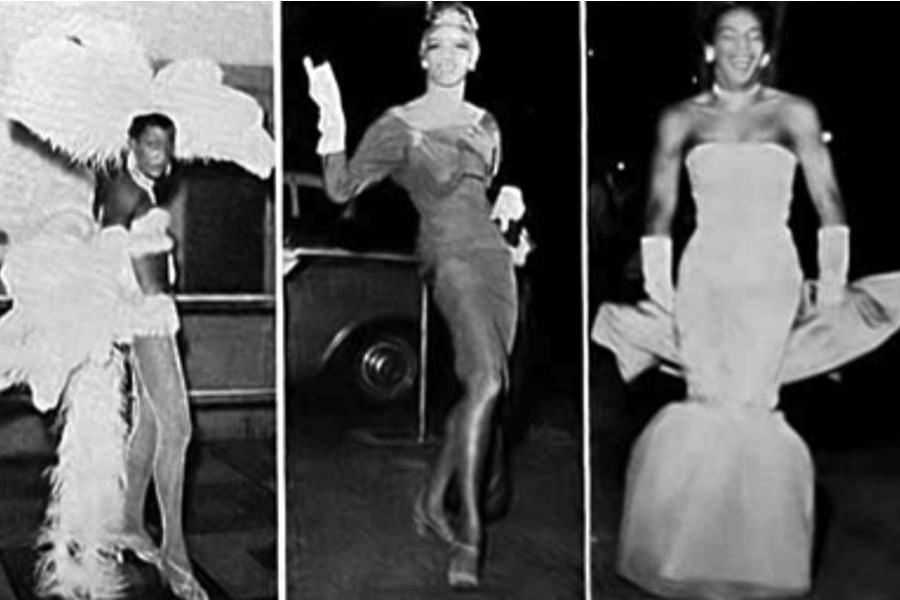
In the bustling streets of Harlem, where culture, history, and innovation converged.
One structure stood as a testament to the neighborhood’s electrifying progress in the early 20th century: the Trolley Depot at Lenox Avenue. Nestled amidst the vibrant tapestry of New York City, this dynamic hub symbolized the power and mobility that propelled Harlem into a new era. Join us as we embark on a journey to unravel the secrets of this captivating landmark, capturing the essence of a community constantly in motion.
In the year 1922, the Trolley Depot at Lenox Avenue became a pivotal hub for Harlem’s electric revolution. The streets were alive with the electrifying hum of trolley cars, which traversed the neighborhood with grace and efficiency. The depot, an architectural marvel in its own right, served as the epicenter of this transportation network, orchestrating the symphony of movement that defined Harlem’s daily rhythm.
The Trolley Depot’s exterior, a testament to grandeur, featured an imposing facade adorned with ornate architectural details. Its towering presence commanded attention, and its arched windows served as portals into a world of electrified possibilities. The depot hummed with activity, its heart pulsating with the energy of progress.
Inside, the depot buzzed with the diligent work of the trolley conductors, who navigated a complex system of tracks, ensuring the smooth operation of the network. These dedicated individuals formed the backbone of Harlem’s transportation infrastructure, connecting neighborhoods, communities, and dreams. Their precision and commitment to their craft made the Trolley Depot a symbol of reliability and efficiency.
The depot’s strategic location on Lenox Avenue, one of Harlem’s main thoroughfares, allowed for seamless connectivity, linking the neighborhood with the wider cityscape. The trolley lines that emanated from the depot facilitated the movement of Harlem’s residents, providing a lifeline that connected them to their workplaces, cultural institutions, and the vibrant pulse of the city beyond.
As trolleys glided along the tracks, they carried with them the dreams, hopes, and aspirations of Harlem’s residents. The depot served as a gateway to opportunity, as passengers embarked on journeys that would shape their lives and the history of the neighborhood. From artists seeking inspiration in the cultural epicenter of the Harlem Renaissance to workers embarking on the daily commute, the trolley cars transported individuals from diverse backgrounds, their paths converging within the depot’s bustling confines.
Beyond its functional role in transportation, the Trolley Depot played a vital social role in Harlem’s tapestry. Passengers mingled within its walls, sharing stories, exchanging ideas, and forming connections that would transcend the confines of the depot. It became a microcosm of Harlem’s vibrant community, a melting pot where the boundaries of race, class, and background blurred in the shared experience of urban mobility.
The Trolley Depot’s influence extended far beyond the realm of transportation. It propelled Harlem’s economic growth, as businesses flourished along the routes, capitalizing on the constant stream of commuters and visitors. Restaurants, theaters, and shops dotted the streets surrounding the depot, transforming Lenox Avenue into a bustling hub of commerce and entertainment.
But as the 1920s unfolded, the Trolley Depot faced an uncertain future. The rise of the automobile, coupled with advancements in mass transit systems, led to the gradual decline of the trolley era. The depot, once the pulsating heart of Harlem’s electric revolution, faced an uncertain fate as the city’s transportation landscape evolved.
In the years that followed, the Trolley Depot’s legacy would fade into memory, replaced by new modes of transportation that catered to the changing needs of a modernizing city. Yet, its impact on the fabric of Harlem remains undeniable. The depot stands as a testament to a transformative era, capturing the essence of a community on the move and preserving the spirit of innovation that propelled Harlem into the annals of history.
As we reflect on the Trolley Depot’s place in the tapestry of Lenox Avenue, let us remember the pioneering spirit that animated Harlem’s electric era. The depot’s legacy lives on in the bustling streets and electrifying energy that define Harlem today—a testament to the enduring power of progress and the indomitable spirit of a community constantly in motion.
Photo credit: Source.
Become a Harlem Insider!
By submitting this form, you are consenting to receive marketing emails from: Harlem World Magazine, 2521 1/2 west 42nd street, Los Angeles, CA, 90008, https://www.harlemworldmagazine.com. You can revoke your consent to receive emails at any time by using the SafeUnsubscribe® link, found at the bottom of every email. Emails are serviced by Constant Contact








